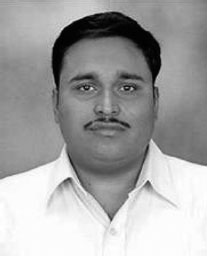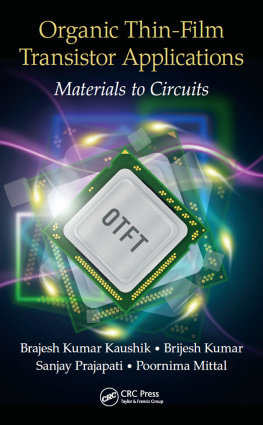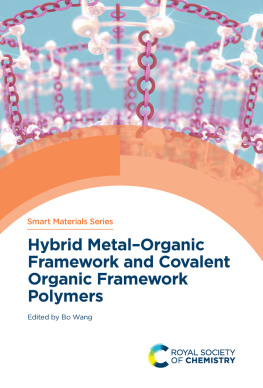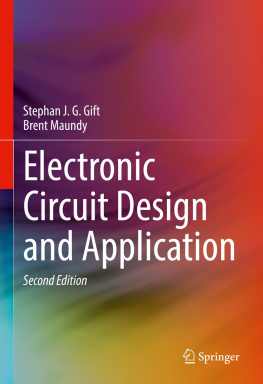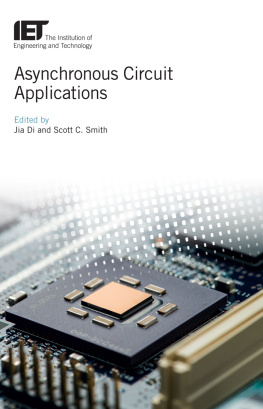Contents
Page List
Guide

Organic Thin-Film Transistor Applications
Materials to Circuits
Organic Thin-Film Transistor Applications
Materials to Circuits
Brajesh Kumar Kaushik Brijesh Kumar Sanjay Prajapati Poornima Mittal

CRC Press
Taylor & Francis Group
6000 Broken Sound Parkway NW, Suite 300
Boca Raton, FL 33487-2742
2017 by Taylor & Francis Group, LLC
CRC Press is an imprint of Taylor & Francis Group, an Informa business
No claim to original U.S. Government works
Printed on acid-free paper
Version Date: 20160628
International Standard Book Number-13: 978-1-4987-3653-4 (Hardback)
This book contains information obtained from authentic and highly regarded sources. Reasonable efforts have been made to publish reliable data and information, but the author and publisher cannot assume responsibility for the validity of all materials or the consequences of their use. The authors and publishers have attempted to trace the copyright holders of all material reproduced in this publication and apologize to copyright holders if permission to publish in this form has not been obtained. If any copyright material has not been acknowledged please write and let us know so we may rectify in any future reprint.
Except as permitted under U.S. Copyright Law, no part of this book may be reprinted, reproduced, transmitted, or utilized in any form by any electronic, mechanical, or other means, now known or hereafter invented, including photocopying, microfilming, and recording, or in any information storage or retrieval system, without written permission from the publishers.
For permission to photocopy or use material electronically from this work, please access www.copyright.com (http://www.copyright.com/) or contact the Copyright Clearance Center, Inc. (CCC), 222 Rosewood Drive, Danvers, MA 01923, 978-750-8400. CCC is a not-for-profit organization that provides licenses and registration for a variety of users. For organizations that have been granted a photocopy license by the CCC, a separate system of payment has been arranged.
Trademark Notice: Product or corporate names may be trademarks or registered trademarks, and are used only for identification and explanation without intent to infringe.
Library of Congress Cataloging-in-Publication Data
Names: Kaushik, Brajesh Kumar, author.
Title: Organic thin-film transistor applications : materials to circuits / Brajesh Kumar Kaushik, Brijesh Kumar, Sanjay Prajapati, and Poornima Mittal.
Description: Boca Raton : Taylor & Francis, CRC Press, 2017. | Includes bibliographical references and index.
Identifiers: LCCN 2016015291 | ISBN 9781498736534 (hardcover : alk. paper)
Subjects: LCSH: Thin film transistors. | Organic semiconductors. | Organic thin films.
Classification: LCC TK7871.96.T45 K38 2017 | DDC 621.3815/28--dc23
LC record available at https://lccn.loc.gov/2016015291
Visit the Taylor & Francis Web site at
http://www.taylorandfrancis.com
and the CRC Press Web site at
http://www.crcpress.com
Contents
Significant developments have been made in organic thin-film transistors (OTFTs) since the mid-1990s. Over the last decade, aggressive efforts have been made to develop high-performance, lightweight, flexible organic electronic circuits. Undoubtedly, organic electronics foresee a range of vital and high-end applications, such as flexible displays, static random access memory (SRAM), light-emitting diodes (LEDs), radio frequency identification (RFID) tags, sensors, solar cells, photovoltaic cells, and flexible and disposable organic integrated circuits. This became possible due to their cost-effective, low temperature, and easy fabrication process for the production of large-area electronic applications. Since organic materials can be deposited at lower temperature, they provide a strong compatibility with the flexible substrates including plastic, paper, fiber, foil, and even smart cloth in comparison to their inorganic counterparts. OTFT, the most prominent device among the organic devices, is now exhibiting much higher or comparable performance to hydrogenated amorphous silicon TFTs (a-Si:H TFTs) commonly used as the pixel drivers in active matrix flat-panel displays (AMFPDs). These additional degrees of freedom for the OTFTs raise two main concerns: first, how to select the most suitable OTFT platform for a specific application and, second, how to estimate its potential in organic analog and digital circuits. These queries have been dealt thoroughly in this book.
This book provides a comprehensive review of the theory behind organic electronics development, covering most recent aspects from material to device physics. It discusses various organic materials used in different layers of OTFT, charge transport phenomenon, and analytical models of single gate in top- and bottom-contact OTFT structures. Moreover, this book discusses the impact of thickness variation of organic semiconductor and dielectric materials. Additionally, single gate (SG), dual gate (DG), cylindrical gate (CG), and vertical channel OTFT devices are reviewed in terms of their structure, characteristics, and performance parameters. The SG and DG OTFTs are analytically modeled, and their application as organic inverters, logic gates, flip-flops, and multiplexers are presented. This book also discusses organic all-p, complementary, and hybrid complementary configurations of inverter circuits as well as SRAM cell designs in terms of their static noise margin (SNM), gain, propagation delay, read stability, and write ability. This book is classified in two main sections: Section I covers organic device physics and modeling conceptions, and Section II discusses their digital circuit applications using SG and DG OTFT structures along with different configurations. The book consists of 10 chapters dealing with different aspects of organic materials, devices, circuits, and applications.
provides an insight into the organic light-emitting transistor (OLET). Moreover, basic operation of OLETs, usage of different active organic materials, and different optical, electrical, and thermal properties of OLETs are discussed.
At the commencement of Section II, concludes the journey with an outline of the applications of organic devices and a discussion about future perspectives and thrust areas of research in organic electronics.
All the chapters are supported with multiple choice, short and descriptive answer type questions, and numerical problems (given at the end of the chapter). The Appendix includes complete simulation codes for realizing single and dual gate OTFT based inverters, 2-to-1 multiplexer, SR latch, and SRAM cell.
We would like to express our gratitude to Professor Ramgopal Rao, Director, Indian Institute of Technology Delhi; Professor Y. S. Negi, Indian Institute of Technology Roorkee; Deepa Saini, Hemwati Nandan Bahuguna Garhwal University; Anil Kumar Baliga, Shubham Negi, Arun Pratap Singh Rathod, Srishti, Yamini Pandey, Aanchal Verma, Akanksha Uniyal, and Kamlesh Kukreti, Graphic Era University, for their kind support in completing this book.
Brajesh Kumar Kaushik
Brijesh Kumar
Sanjay Prajapati
Poornima Mittal
